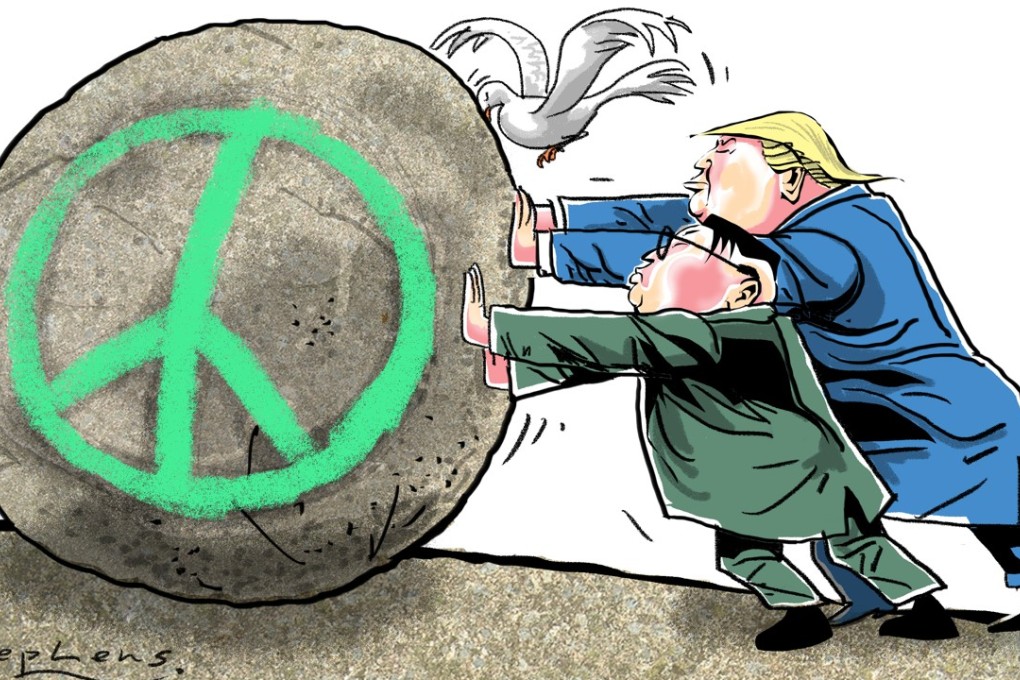Advertisement
After Kim meets Trump, here’s how peace could break out on the Korean peninsula – just don’t expect a quick fix
John Barry Kotch says a peace treaty could relieve the Korean peninsula of its tensions, and a series of confidence- and trust-building measures could produce denuclearisation and end the need for the UN command there. The process, however, would almost certainly be gradual
Reading Time:4 minutes
Why you can trust SCMP

High on the list of tangible deliverables at this week’s Singapore summit is a peace treaty ending the Korean war. US President Donald Trump acknowledged as much during North Korean envoy Kim Yong-chol’s pre-summit White House drop-by, noting that the meeting could lead to a treaty formally ending the war of 1950-1953, a goal enunciated in the April 27 Panmunjom Declaration and a staple of North Korean propaganda for decades.
Advertisement
More importantly, it dramatically shifts the summit’s goal posts from an “all-or-nothing” denuclearisation gambit to a more modest and measured process. This development makes sense both logically and pragmatically. After all, what better than a peace treaty between former enemies on the battlefield and current adversaries than to encourage denuclearisation, a long-term process at best.
Nevertheless, a peace treaty is not without its own challenges given the nature of the Korean war itself; it origins, the multiplicity of combatants fighting under different flags and an armistice agreement ending the active fighting but not the underlying conflict – embodied in the mantra, “The war hasn’t ended, it’s only a truce”.
The Korean war – a conflict comprising three distinct phases – began as a civil war when the North invaded South Korea in June 1950 without a formal declaration of war which, under international law, would normally be preceded by breaking diplomatic relations between sovereign states.
Advertisement

Advertisement